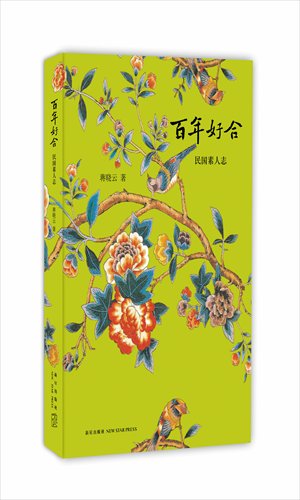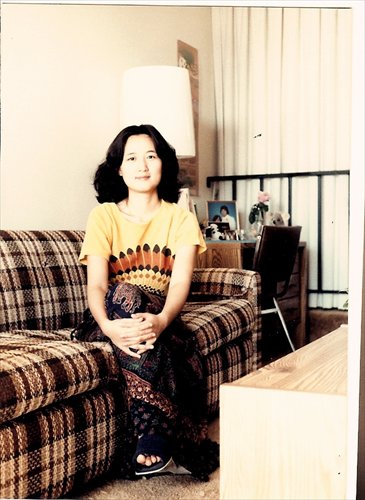Together after a Hundred Years
Published by Thinkingdom Media in January, the new novel Together after a Hundred Years has once again brought Taiwanese writer Chiang Hsiao-yun to the attention of Chinese readers.

The book cover of Together after a Hundred Years Photos: Courtesy of Thinkingdom Media
In the mid-1970s, Chiang, then in her early 20s, made a name for herself in the island with a series of prize-winning books. However, her writing career was put on hold after she went to study in the US in 1980 and then went into the IT industry.
Made up of 12 stories featuring 14 women born in the Republic of China period (1912-49), the new book is the third by Chiang after she returned to the literary world in 2011, but it's the first novel in a planned series that will tell the stories of 38 Shanghai women born during the Republican era who scattered to different corners of the world after 1949.
Together after a Hundred Years begins with a woman named Jin Lanxi celebrating her 95th birthday in Shanghai with her offspring who have come from around the globe.
According to Chiang, the character of Jin is loosely based on a real overseas returnee she met during a birthday banquet. The woman returned to Shanghai to settle down on Hengshan Road after decades of living abroad.

Chiang Hsiao-yun
The book's other characters include a dancer who seeks her fortune in the US, a restaurant owner who goes to Taiwan with her lover, and a military officer's daughter who enjoys a luxurious life. Their stories, thought distinct, intersect in various ways.
"The lives of her Chiang's characters overlap with those created by Eileen Chang, but she traces their trajectory further both before and afterward, as though creating the pre-existence and post-existence of Chang's characters," wrote the acclaimed Shanghai-based writer Wang Anyi in the prologue to the book. "Eileen Chang chose one part of their lives, the waning and unreturnable period permeated by an atmosphere of desolation and sadness; while Chiang Hsiao-yun is so ambitious that she challenges herself to see whether she can open up a new world."
"The structure is very important in a story, so to capture the ups and downs of a character who has lived a long life is a real challenge for me," said Chiang in an e-mail to the Global Times. "There is no effective way to solve the puzzle but to ponder the details over and over again, to arrange them and tell a complete story in as few words as possible, while dropping hints for future stories."
Rather than mentioning the exact date of a birth or an event in the book, Chiang refers to historical incidents to set the backdrop of her characters and their stories. However, Chiang also peppers her refined prose with Chinese neologisms - such as "hold zhu" (keep under control) and "fu er dai" (the offspring of the wealthy) - to add humor.
Chiang, who lived in Shanghai for three years, told the Global Times that her familiarity with the city's historic architecture and old lanes helped her to imagine and depict Republican era Shanghai.